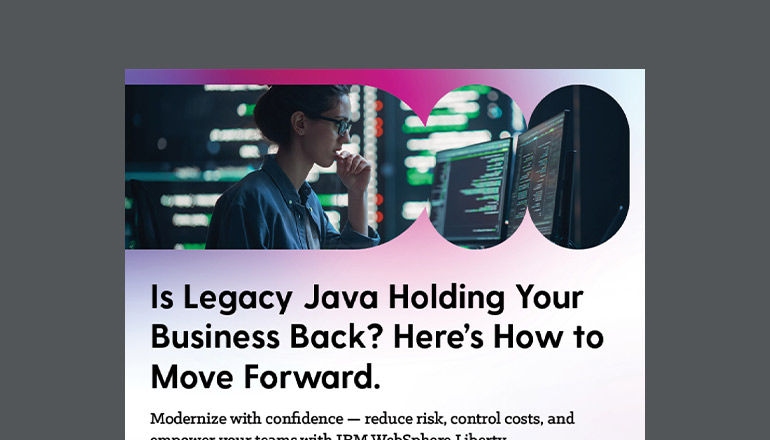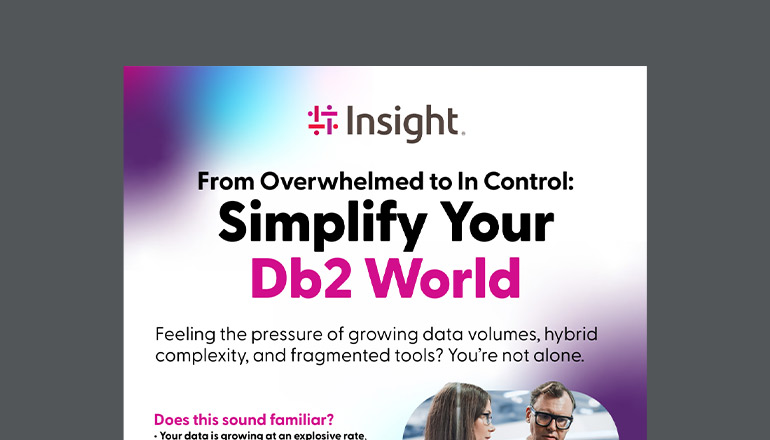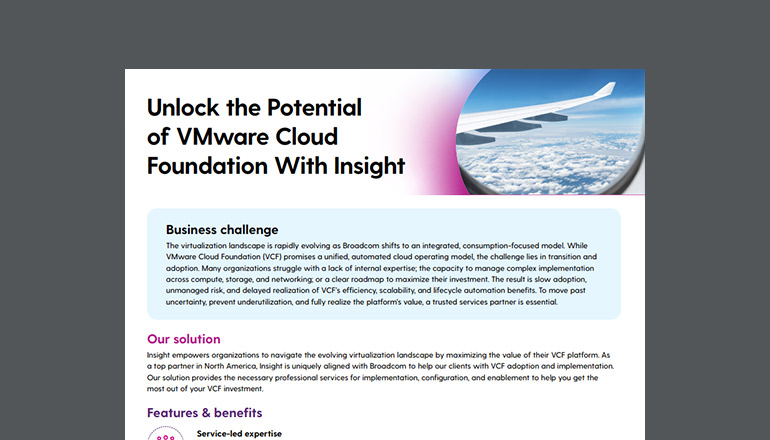Blog Reduce Your IT Spend With FinOps for Cloud
By Marcus Benson / 29 Mar 2022 / Topics: Cloud

Cloud adoption is a wonderful thing. When compared to companies with on-premises IT infrastructure, cloud-agile companies benefit from better security, greater flexibility, improved efficiency and the ability to leverage big data insights for strategic decision-making.
But there can be an intimidating side to cloud adoption — and that's the cost.
We need to change how we think about cloud spending.
Before technologies moved to the cloud, procurement teams typically had more control over the organization’s total IT spend. When a new IT purchase was needed, the request went to the procurement team for approval and processing.
That’s not the case with cloud spending. Every time an engineer lights up a server, that cost goes straight to the bottom line, often with no approval needed. The lack of cloud usage oversight can lead to some pretty massive — and unexpected — IT bills at the end of the month.
As my co-presenter Joseph Miller said in our recent Insight Live session on LinkedIn:
“We used to buy technology like how you’d shop for a child. You hold up a shirt that's three sizes too big and say, ‘Oh, you’ll grow into it.’ Then, once you hit 70% utilization, you go shopping again. Well, in the cloud, it's very elastic, but you pay for every minute and every resource you use.”
IT teams need an exact fit when it comes to cloud usage — and FinOps is the best way to get it.
What is FinOps?
FinOps (Finance + DevOps) is an emerging methodology for managing and optimizing cloud spend across multiple teams in an organization. The FinOps Foundation defines it as:
“An evolving cloud financial management discipline and cultural practice that enables organizations to get maximum business value by helping engineering, finance, technology and business teams collaborate on data-driven spending decisions.”
The primary goal of FinOps is to promote collaboration across the organization and act as a shared accountability model. It's a team sport that requires buy-in from every cloud user in the organization.
Many times, different teams haven’t learned how to talk to each other yet. FinOps acts as a central authority to outline each team’s responsibilities, promote collaboration, provide best practice recommendations, and establish common language and goals around cloud consumption.
3 phases of the FinOps framework
Inform
Gain visibilitiy into cloud costs and create financial accountability by showing teams what they're spending on cloud and why.
Optimize
Based on data gathered in the "inform" phase, take action to optimize cloud spending across the organization.
Operate
Establish shared goals around cloud consumption. Reevaluate your goals regularly to refine your FinOps program and prioritize continous improvement.
Webinar series: Learn the brass tacks of FinOps.
Hear from Insight’s experts in a four-part webinar series as they take a deeper dive into FinOps. You’ll gain a deeper understanding of the framework, best practices across each of the phases and more. Learn more here.
What are the benefits of FinOps?
When you establish your FinOps practice, you’ll realize some immediate benefits, as well as some long-term benefits as your practice matures.
Here are a few of the immediate benefits of FinOps:
- Increase visibility into cloud usage.
- Drive team accountability with cloud consumption benchmarking.
- Forecast cloud consumption needs and plan budgets accordingly.
- Rightsize your cloud instance and services as needs change.
- Give separate teams a common language to talk about cloud consumption.
At its core, FinOps isn't just about saving money, it's also about making money for the business. As your FinOps practice matures, you’ll learn how to leverage resources more efficiently and provide the right data to leadership so they can make fast, informed decisions. This will help your bottom line, not only in cost optimization, but in increased revenue and margin.
Having a mature FinOps practice could even aid you in identifying a security breach. For example, if a hacker takes over your Virtual Machines (VMs) and starts using them to mine bitcoin, your FinOps practice will likely notice a big spike in utilization and higher costs as a result.
And we’re just skimming the surface here. The benefits of FinOps are far-reaching and will continue to emerge as the discipline develops.
FinOps for any cloud
The beautiful thing about FinOps is that it's a cloud-agnostic framework, so it can be applied to Azure, AWS, GCP or any public cloud provider of your choice. Each provider will have its own optimization levers and considerations to understand, but the core principles of FinOps can be applied to any public cloud provider.
Who should be on the FinOps team?
Since there are so few people with FinOps experience, many organizations are struggling to put a team together. Some businesses are choosing to upskill a single employee to lead the FinOps practice. But that’s a lot for one employee to take on — from developing the organization’s FinOps policies and strategy, to looking for optimization opportunities, to acting as the communication quarterback between multiple teams.
Enterprises are starting to realize that a FinOps team is not just one individual that sits in a cloud Center of Excellence (CoE). FinOps works best with a group of individuals from the cloud CoE, as well as the governance, finance, engineering, operations and automation teams — all of whom work together to establish and maintain the FinOps practice.
Since FinOps is an open-source foundation, anyone can get certified as an expert. No matter your job role, there's training available to help you explore the FinOps framework and learn how to be a good team player in the FinOps space.
How to get started with FinOps
The first step toward building a FinOps team is to help the rest of the business see the need and identify FinOps as a priority. Next, put someone in place as a FinOps lead within your cloud CoE team. If you don't have a cloud CoE team, start by forming a cloud governance team and include FinOps within that team.
It takes a lot of planning, so you need to have somebody who has the time and the availability to start putting a roadmap into place, identifying the activities that need to be done, setting priorities and building out your process.
It's typically a “crawl, walk, run” maturity model. Most organizations don't dive into everything at once. They focus on a few high-priority items, get their feet under them, and get through one cycle of FinOps phases (inform, optimize, operate) before they start understanding where the gaps are and where the next focus areas should be.
As a methodology, FinOps is still in its infancy. There are a lot of organizations out there that are still struggling, even with a FinOps team in place, because this isn’t a one-size-fits-all framework. Every organization will have different challenges, dependencies, politics and other things they need to work through.
That’s where having a knowledgeable IT partner can really come in handy.
FinOps in action
Having a reliable team of experts to help initiate your FinOps practice could save you a lot of time and frustration. For example, a Fortune 50 oil and gas company brought Insight in to help establish its FinOps organization. We had just put a tool in place with anomaly detection and some alerting capabilities when an incident occurred.
Right before the Thanksgiving holiday, an engineer was testing some VM scale sets and accidentally typed “166” instead of “16” for the max scale set size. They scaled out 166 VMs and accidentally left them on through the Thanksgiving holiday.
We received an alert on Thanksgiving Day saying the client had a $15,000 day-over-day increase in VM scale sets. Because we had the initial FinOps “inform” phase in place, we had the right visibility and tools to get the alert out and quickly address the situation.
The client was able to correct the typo one day later, rather than after the Thanksgiving break, when it could have been five to six days of $15,000 a day in overspending. You might be horrified at the $15,000 mistake, but just consider that it could have been $150,000 or more if FinOps processes and good reporting hadn’t been in place.
Learn more about the true potential of FinOps in our recent Insight Live session on LinkedIn.




